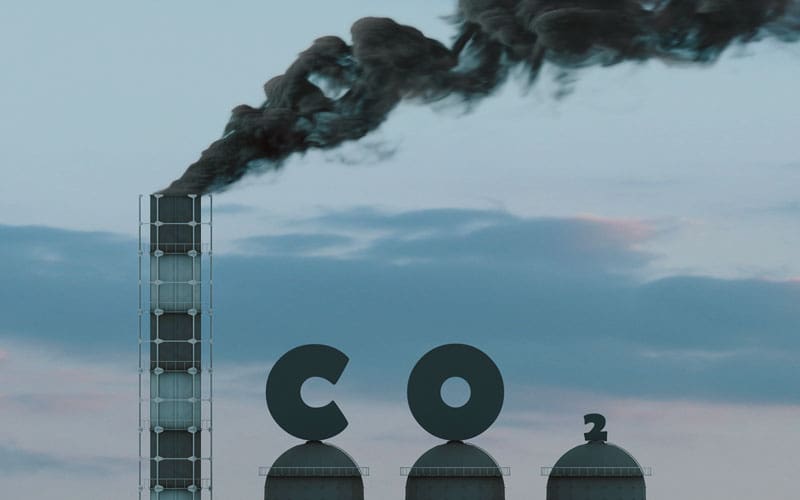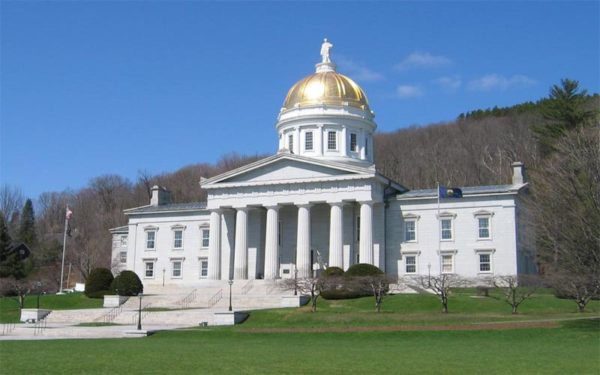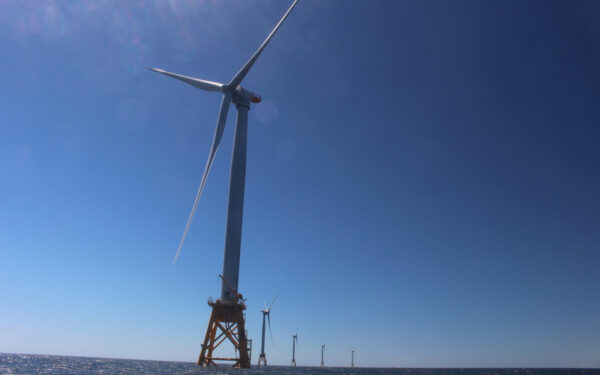
Carbon dioxide is one of the many polluting emissions at the root of climate change. Photo: Shutterstock.
With Halloween just behind us, I’ve been thinking about all that’s spooky in our lives. While some folks get their share of scare by watching horror movies or dressing up in costume, I get chills from the real-life horror that is climate change.
All jokes aside, climate change really does scare me. A bomb cyclone hitting the West Coast, Hurricane Ida flooding parts of New England and my hometown of New York – it all feels surreal. But it’s the reality we now contend with. This reality is why I found myself glued to news about the United Nations Climate Change Conference in Glasgow, Scotland, where for the past two weeks, world leaders convened to decide their next steps to fight (or not fight) climate change.
The 101s of the Climate Conference
We also know the annual U.N. climate conference by the acronym COP, which stands for Conference of Parties. The “parties” are the leaders, politicians, and advocates who travel to a different place each fall to discuss the global response to climate change. These conventions started with the Earth Summit in 1992, where for the first time, global leaders agreed that emissions from just a few nations (mostly western and developed) were primarily responsible for climate change. The conventions afterward were aimed at slowing the progression of the crisis.
You’ve probably heard about COP21, held in Paris back in 2015. That’s when all but two countries agreed to cut their climate-damaging emissions to limit global warming to less than 2 degrees Celsius. (President Trump pulled the United States out of the “Paris Agreement” in 2016, but President Biden has recommitted us to its goals.)
What just happened in Scotland was the 26th U.N. climate conference, with hundreds of representatives from all over the world. COP26 was pivotal because it was the first conference since the U.S. (one of the highest greenhouse gas emitters in the world) re-entered the Paris Agreement. Experts around the world called this year’s meeting one of our last chances to combat climate change.
How Do I Feel About the U.N. Climate Conference? It’s Complicated
It’s hard not to get frustrated by the decades of international inaction to cut emissions. Despite a goal to keep global temperature rise to 1.5 degrees Celsius above pre-industrial times, we are quickly heading to 2-degrees-plus. While at 1.5 degrees we still face tremendous damage, that 0.5 degree difference condemns us to cities drowning, reefs dying, and ice sheets melting – not to mention increased weather anomalies and wildfires, crop failures, and habitat loss.
What makes me feel awful is the millions of lives affected by the climate catastrophe – lives that ironically contributed the least to this global crisis. That doesn’t just include plants and animals, but also people my age who will live with the worsening climate impacts. That includes countries with the smallest carbon footprints and the biggest climate risks – like being submerged as sea levels rise.
I’m angry, too. And rightfully so – people have known about climate change and its impacts since before I was born, but our government and corporate leaders have done almost nothing to stop it. This infuriating inaction isn’t just a global problem. Our own Congress struggles to do anything meaningful about our changing climate, grappling most recently with the infrastructure bill only just signed into law in the past week and the budget reconciliation bill still under negotiation in the House.
I know I’m not alone in my frustrations. But we still need more people to not only understand the gravity of our situation but also feel inspired enough (or angry enough) to do something about it.
Global Promises Need Local Action
I couldn’t go to COP26 – and I’m guessing you couldn’t, either. And as frustrating as it is to hear empty promises both globally and nationally, we don’t need to wait on global leaders coming together every year to do something about climate change. Here’s what I’m doing, right here at home, that makes me feel like the glass is half full, that I can still impact the world around me and the people I love. Better yet, you can help, too.
- Stay updated on climate news via articles and social media. Keep informed so you know what’s happening in our world and what decisions are (or aren’t) made.
- Talk to your peers, coworkers, friends, and families – especially those who don’t pay as much attention or are apathetic to climate change. In the spirit of COP26 getting the world on board with climate action, let’s get everyone we know on board.
- Talk to your local elected officials, who represent you and act on behalf of what you care about. While we might not be able to speak in international conferences with world leaders, our words can reach the local and state governments who can enact change in our communities and neighborhoods.
- Support local action. Five out of six New England states have binding laws on the books to slash their carbon pollution. Where international action hasn’t worked, local action has – but we need to keep pushing to ensure state leaders follow through.
While the fads of horror movies might fade after Halloween, the scariness of climate change remains. But the difference between real life and a horror movie is the fact we can do something about what we’re seeing. So keep watching, keep talking, and stay inspired to act.




